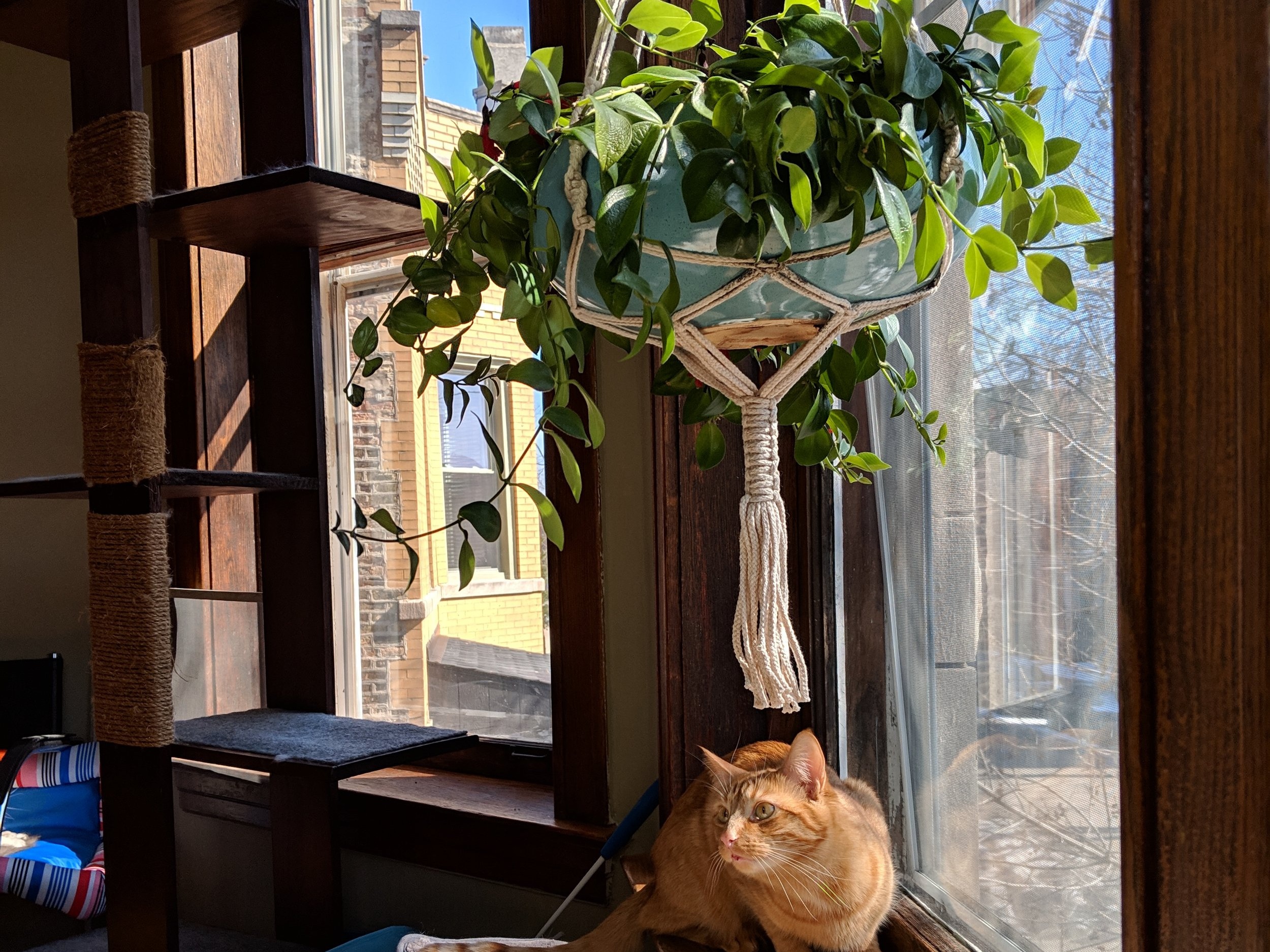Lipstick Plant
Scientific Name: Aeschynanthus radican
NON-TOXIC
Lipstick Plants are one of my favorites and on top of being non-toxic to cats and dogs, they are quite easy to care for
Let me know in the comments if you have any questions regarding the Lipstick Plant or suggestions for plants you would like me to talk about in the future
⚠Toxicity⚠
Though the Lipstick Plant is considered non-toxic, it’s important to remember that any plant may cause vomiting and gastrointestinal upset in dogs and cats, and those with large leaves can be a choking hazard. If you believe that your pet is ill or may have ingested a poisonous substance contact either your local veterinarian or the APCC 24-hour emergency poison hotline at 1-888-426-4435
General Info
Lipstick Plants are tropical vines native to Malaysia, and do best in a humid environment, though they are very tolerant of dryer indoor conditions as well. They prefer bright, indirect sunlight and do great hanging near windows or other sunny areas. When well cared for, they will bloom frequently and display bright red flowers that look a bit like a tube of red lipstick until they open completely
Care Instructions
🌍Soil
Lipstick Plants prefer damp, airy soil that drains quickly. African violet potting mix combined with crushed charcoal works well
💦Water
Use filtered or “aged” water (water left in an open container for several days to remove chlorine)
Water moderately and empty the catch saucer under the plant afterwards to ensure the roots do not become too wet
Allow the top 1 to 2 inches of soil to dry before watering in the winter, this will encourage more blooming in spring and summer
💩Fertilizer
Use a water-soluble fertilizer high in phosphorus at a ratio of 3-1-2, dilute around 1/4-1/2 of the recommended strength
Fertilize every other week in the spring and summer, and monthly in the fall and winter
You can use slow-release fertilizer, applied according to the manufacturer’s instructions
🌞Environment
Place the plant in a very bright area, but not in direct sunlight. A west or south facing window (north if in the southern hemisphere) with a sheer curtain is ideal
Keep room temperature between 65-70°F (18-21°C) during spring, summer, and fall with an average humidity between 25% and 50%
In the winter, aim for a temperature of 65°F (18°C) and keep the plant away from A/C vents and doorways to reduce drafts
👩🌾Re-potting
When the plant becomes root-bound, its container is full of roots, which may even begin to emerge from the drain holes in the pot. This indicates it needs to be re-potted into a larger container
Choose a container that is 1-2 inches larger than the current one and has holes for drainage in the bottom
Pour an inch of well-draining potting mix into the new container
Gently hold the plant’s stems as close to the soil line as possible, turn the pot sideways, and slowly pull the plant out
Use scissors to snip excess roots emerging from the main root mass
Put the plant in the new container and fill up the area around the plant, taking care not to change how high the soil line is on the plant
Water with filtered or aged water until water drains from the bottom and dump any excess water
✂Pruning
Prune the plant back right after it finishes blooming, this will encourage new stems and leaves to grow. Each stem should be trimmed back to a length of around 6 inches to maximize new growth, but if the plant appears a bit unkempt, you can trim the longer vines to as short as 2 inches
🌱Propagation
Water the day before taking a cutting to ensure proper hydration
Cut a stem below the fourth set of leaves from the tip of the vine and pinch off the two lower sets. Leave the two upper sets, for a total of 4 leaves remaining
Fill a small container with 1/2 peat moss and 1/2 perlite or vermiculite and make a small hole in the center
Dip the bottom of the new cutting in rooting hormone and plant it in the container, you can plant several cuttings in the same container if desired
Give the soil a good misting and place the container inside a plastic bag or other transparent container that you can poke holes in, but make sure you keep the plastic from directly contacting the cuttings
Keep the container out of direct sunlight, and regularly check the moisture inside the container. If the soil is dry and you will need to mist it, but if condensation is forming on the container, you will need to poke some holes to provide ventilation and avoid root rot
Once the cuttings have taken root, you should re-pot each one its own 3-inch pot. Keep the soil moist but not soaking wet and mist the leaves once or twice a week



